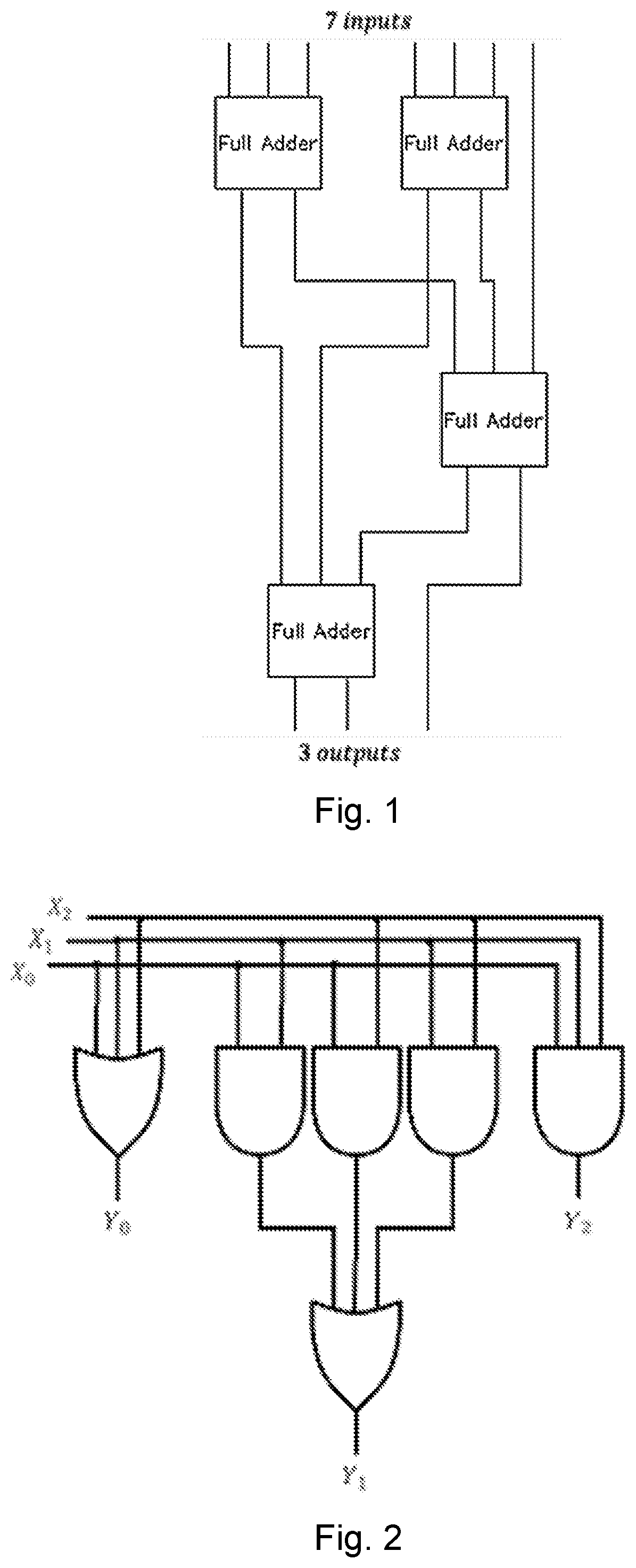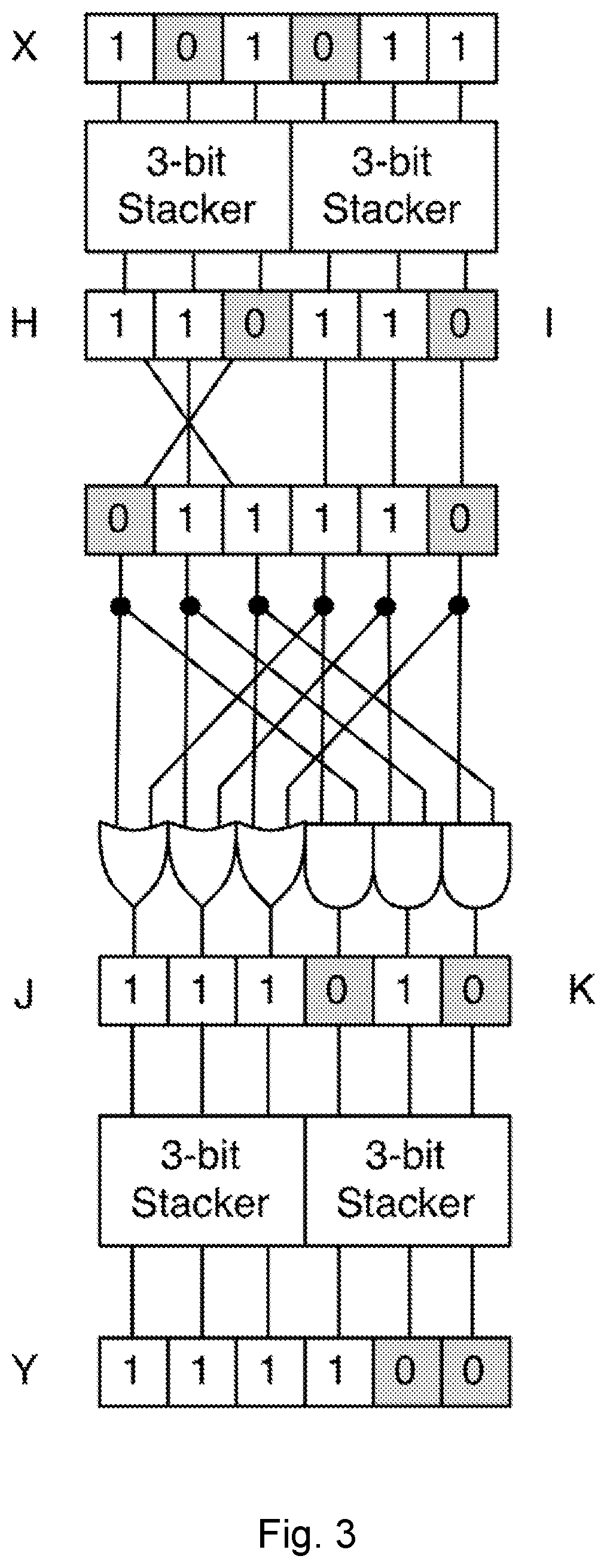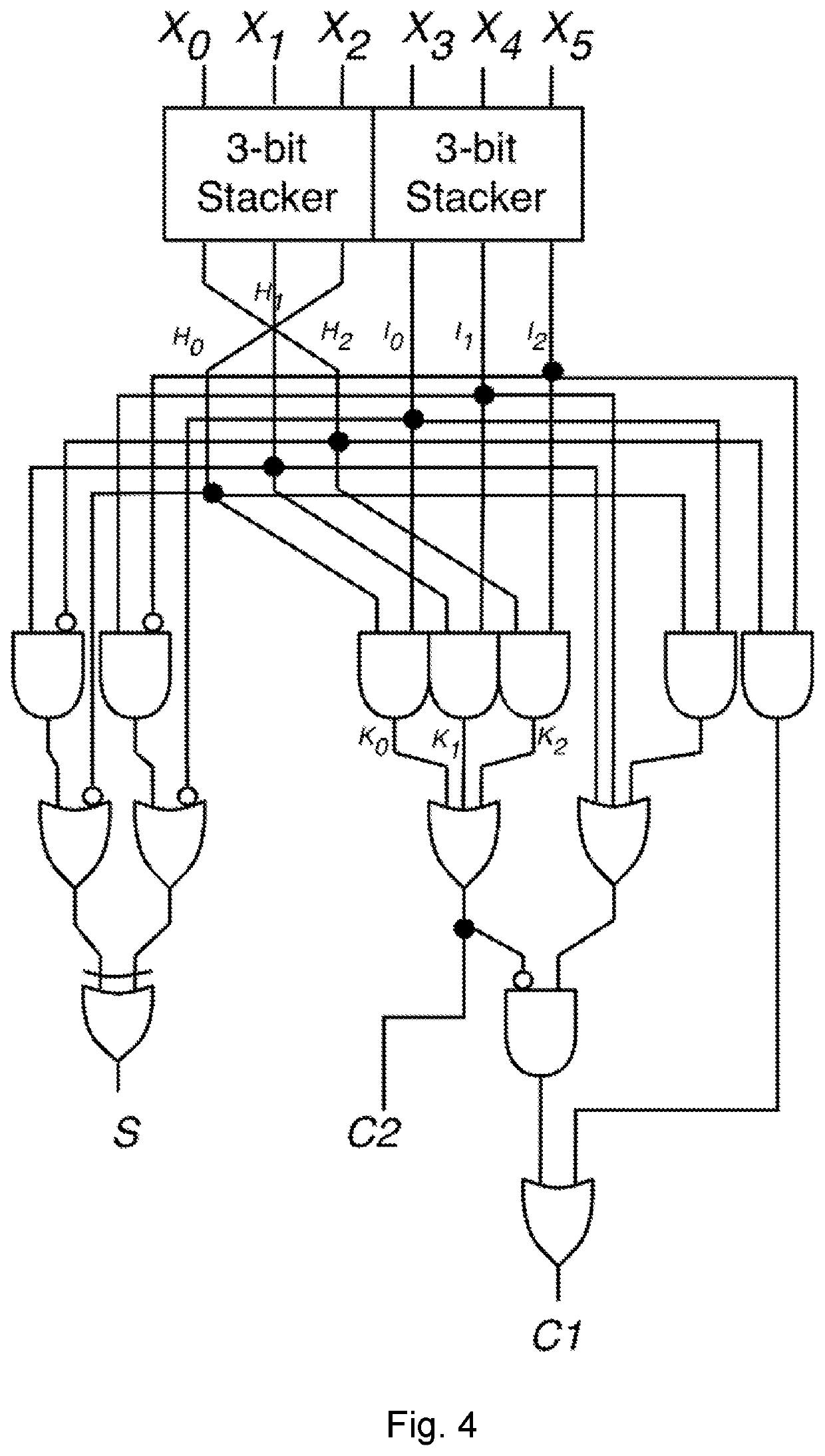Fast binary counters based on symmetric stacking and methods for same
a counter and binary technology, applied in the field of logic circuits, to achieve the effect of saving power and speed
- Summary
- Abstract
- Description
- Claims
- Application Information
AI Technical Summary
Benefits of technology
Problems solved by technology
Method used
Image
Examples
first embodiment
[0037]In a first embodiment, the present disclosure may be embodied as a method of stacking a 2b-bit binary vector. The 2b-bit vector is split into a first set of b bits, and a second set of b bits. No bits of the 2b-bit vector are used in both the first set and the second set. The method includes stacking the first set such that any bits having a value of ‘1’ occupy the least significant bits. The second set is stacked such that any bits having a value of ‘1’ occupy the most significant bits. In some embodiment, the first set may be stacked such that the ‘1’ bits occupy the most significant bits and then the set is reversed.
[0038]For each bit of the first set and the second set, determine if a bit of the first set or a corresponding bit of the second set has a value of ‘1’. If so, a corresponding bit of a third set is set to ‘1’. For each bit of the first set and the second set, determine if a bit of the first set and a corresponding bit of the second set has a value of ‘1’. If so,...
case 2
[0067] c≥b. This means that k+1≥b so we have b−k≤l. In this case, the regions i≥b−k and i
Pc(J)=k+l−(k+l−b)=b (28)
Pc(K)=k+l−b=c−b (29)
Namely, the J vector will be completely full of ‘1’s and the remaining ‘1’ bits will appear in the K vector. We can verify:
Pc(J)+Pc(K)=b+c−b=c (30)
Therefore, the number of ‘1’ bits is unchanged.
[0068]We have therefore demonstrated that the J and K vectors contain the same number of ‘1’ bits as X, but all of the J bits will become ‘1’ before any of the K nits become ‘1’. We will pass both J and K into b-bit stackers, and let Y be the concatenated output of these two stackers.
6:3 Counter: Conversion to Binary Count
[0069]We will now use the bit stacking method defined above for b=6 specifically and for general b above to create a 6:3 counter circuit. The 6:3 counter will have six binary inputs X0, . . . , X5 and produce three outputs C2, C1, and S such that the binary number C2 C1S i...
PUM
 Login to View More
Login to View More Abstract
Description
Claims
Application Information
 Login to View More
Login to View More - R&D
- Intellectual Property
- Life Sciences
- Materials
- Tech Scout
- Unparalleled Data Quality
- Higher Quality Content
- 60% Fewer Hallucinations
Browse by: Latest US Patents, China's latest patents, Technical Efficacy Thesaurus, Application Domain, Technology Topic, Popular Technical Reports.
© 2025 PatSnap. All rights reserved.Legal|Privacy policy|Modern Slavery Act Transparency Statement|Sitemap|About US| Contact US: help@patsnap.com



